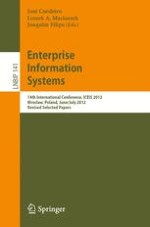2013 | OriginalPaper | Buchkapitel
The Enterprise Architecture Body of Knowledge as an Evolving Discipline
verfasst von : Hadi Kandjani, Peter Bernus
Erschienen in: Enterprise Information Systems
Verlag: Springer Berlin Heidelberg
Aktivieren Sie unsere intelligente Suche, um passende Fachinhalte oder Patente zu finden.
Wählen Sie Textabschnitte aus um mit Künstlicher Intelligenz passenden Patente zu finden. powered by
Markieren Sie Textabschnitte, um KI-gestützt weitere passende Inhalte zu finden. powered by
